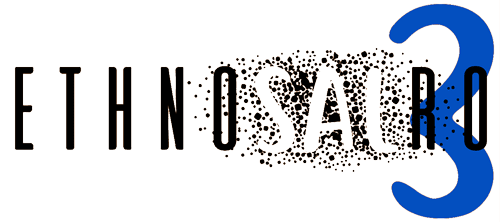Dear all,
We are organising a session under the 19th EAA Annual Meeting (Pilsen, 4-8 september 2013) on Salt of the Earth: an invisible past in European Archaeology (General theme “Archaeology of food and drink”).
The deadline for the submission of papers and poster will be closed on 15th March 2013. The session will discuss a wide range of salt archaeology perspectives. Innovative contributions, case studies, research project and posters are invited under the following themes and related topics. Please note that all participants have to be EAA members.
Website : www.eaa2013.cz
To submit: proposal.eaa2013.cz/submission/form.php
Best wishes and see you in Pilsen !
Robin Brigand, Olivier Weller, Marius Alexianu and Roxana-Gabriela Curca
Salt of the Earth: an invisible past in European Archaeology
Organisers: Robin Brigand (Lab. Chrono-Environment – UMR 6249, MSHE Ledoux – USR 3124, France and Alexandru Ioan Cuza University, Romania), Olivier Weller (CNRS, Lab. Trajectories, From Sedentism to the State – UMR 8215, MAE René Ginouvès, France), Marius Alexianu (Alexandru Ioan Cuza University, Romania) and Roxana Curca (Alexandru Ioan Cuza University, Romania)
With today’s standardization of food habits, salt loses its importance, typical of preindustrial societies. In certain regions, it still plays an indisputable social role, with practices ranging from punctual harvesting to a true industry. Studying salt in the ancient societies requires a multidimensional approach. What tools and methods would be use to take into account all its social, politic, economic and symbolic dimensions? How would an integrated approach between past and present allow us to consider salt in all its social complexity? This session intends to review our current understanding of the European salt production process (solar or ignigenous), by assessing the archaeological, historical and ethnographical evidence as well as current interpretation and theories in this topic area. Two complementary questions should be explored. The first one is an approach of today’s uses and context of salt production and circulation. It is fundamental because it deals with practices that will soon have disappeared and can offer some predictive models for archaeologists. The second one is an archaeological approach of the uses and social strategies developed around this resource and his remains (ceramic technology, experimental archaeology, paleoenvironmental, chemical or geoarchaeological studies). It allows us to track the technical and economical behaviors, but also to highlight competition and societal choices caused by the availability and circulation of salt. The quality and quantity of new data in the last decade call for a necessary standpoint about salt uses, exploitation, as well as its socioeconomic impacts. The comings and goings between past and present, between archaeology and ethnography, allow us to sketch a history of relations between man and this specific resource over the long term.

